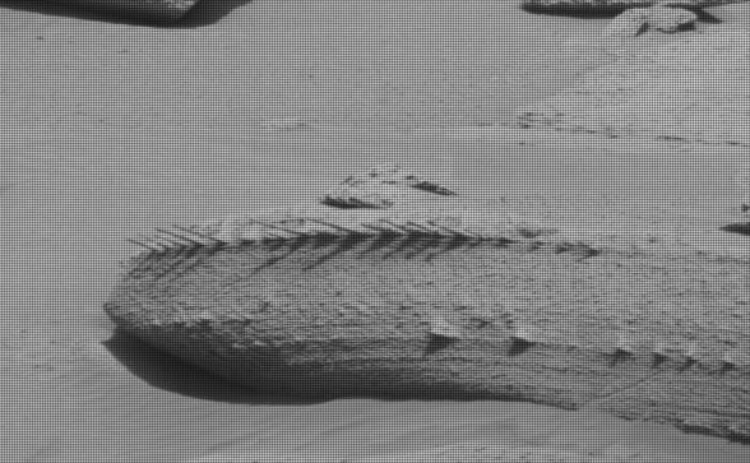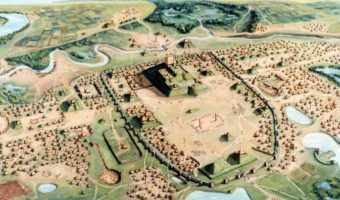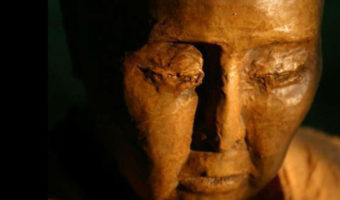NASA’s Curiosity Rover Discovers a Bone-Like Rock on the Surface of Mars
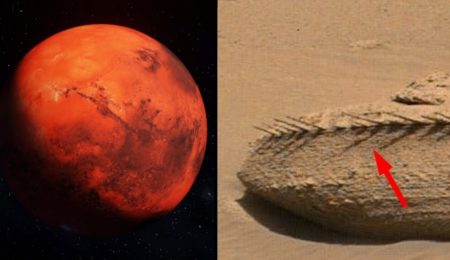
Discovering life on other planets is one of the key factors driving humanity’s space exploration efforts. After all, a planet that supported life in the past could become our new home. When it comes to the potential to host life, Mars, one of Earth’s closest neighbors, is often in the limelight. On top of that, NASA’s Curiosity rover has recently captured images that show structures similar to a fossilized bone on Mars. So, is this some groundbreaking discovery that proves life existed on Mars or something else? Let’s find out.
Table of Contents
Has the Curiosity rover stumbled upon the bones of an extinct Martian creature?
In April 2023, the Curiosity rover was investigating the Gale Crater on Mars when it discovered something inexplicable. The rover’s cameras snapped a picture of an object that bears a striking resemblance to a fossilized bone. Seen partially embedded in the Martian soil, the object appears to have a central shaft from which extend smaller protrusions.
Many in the online space community shared this sentiment, as they took to X (formerly known as Twitter) to express their views. Some felt that it resembled the bones of a fish or the branch of a fir tree. Nathalie A. Cabrol, an astrobiologist, claims this is the most bizarre rock she has seen in their 20 years of studying Mars.
The location of this fossilized “bone” on Mars is also very interesting – the Gale Crater. It is now a well-known fact that the surface of Mars held large bodies of water in the past. The Gale Crater was one of Mars’ largest lakes before it dried up around 3.5 to 3.8 billion years ago. Finding this “bone†rock in a dry lake bed further fueled the idea of it belonging to a marine animal. One netizen even likened it to a curled-up dragon!
People have divided opinions on the recent discovery of bone-like structures on Mars.
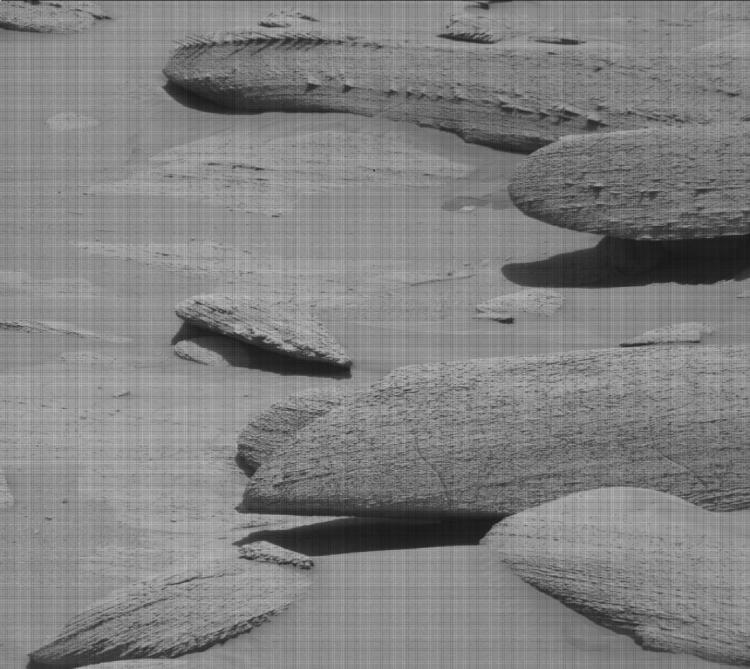
While it may be exciting to imagine life on the Martian landscape in the past, there may be more plausible causes for this “bone” on Mars. Erosion, caused by both wind and past water flows, is one of the most common reasons for rock formations on Mars. The surface of Mars has a very thin atmosphere and is subject to extreme weather patterns. Natural forces can create certain shapes in the rocks and soil that resemble bones or even stranger objects. On a long enough timescale, erosion can create almost every geometric shape known to man. Ms. Cabrol also believes it may be the remains of ripples after lots of erosion.
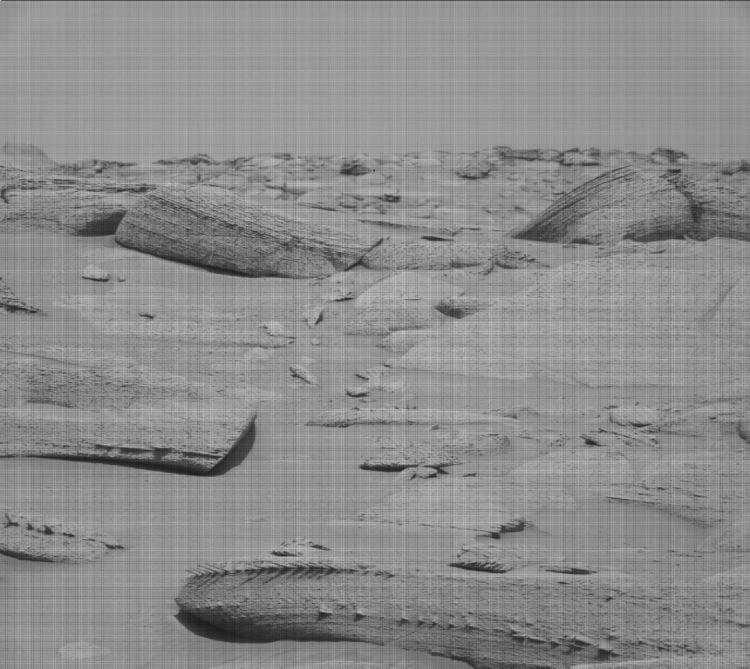
Another possible cause for people citing a resemblance to bones is the effect of pareidolia. It is defined as the tendency to perceive a specific, often meaningful image in a random or ambiguous visual pattern. Human brains have evolved to recognize patterns and find structure even where there may be none.
While there is no conclusive evidence for the origin of this formation, it is a valuable scientific discovery. As Curiosity continues to explore the Gale Crater, we can expect to receive even more fascinating discoveries.
Curiosity has made some groundbreaking discoveries on Mars since 2012.
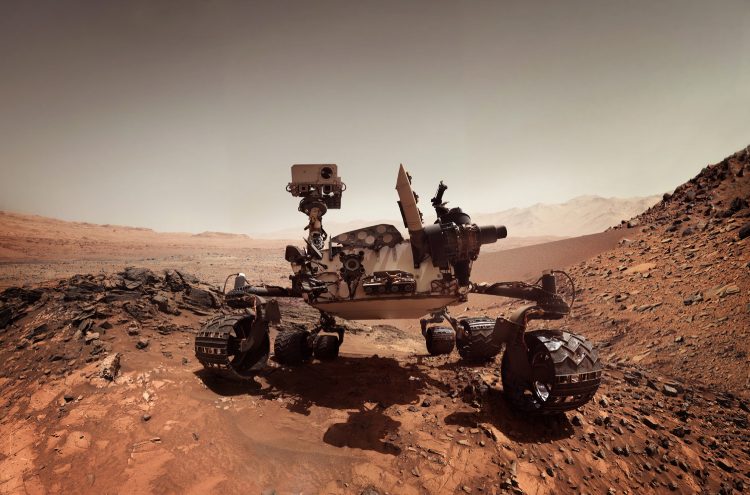
The Curiosity mission is one of humanity’s greatest scientific projects. Researchers have been able to identify ancient river channels and groundwater deposits, indicating that Mars was a much wetter planet in the past. The pictures and data it has captured since 2012 have provided us with a better understanding of the planet’s geological history, past environmental conditions, and potential signs of microbial life.

The rover’s onboard Sample Analysis at Mars (SAM) instrument discovered organic carbon molecules after drilling into the rocks of Mount Sharp. While not conclusive evidence of life on the planet, these components are considered the building blocks of life. The Tunable Laser Spectrometer in the SAM has detected varying background levels of atmospheric methane, a gas that can be produced by microscopic organisms. The SAM has also been useful in discovering the presence of nitrogen in the form of nitrate in the rocks.
Curiosity has determined that liquid water, along with the chemicals and nutrients necessary for supporting life, were present for at least tens of millions of years in the Gale Crater. NASA has extended the Curiosity mission for another three years, allowing humans to explore the planet’s secrets even longer. Given everything humans have seen from the mission so far, research efforts may have simply scratched the surface of what could become a new home for humans in the solar system.














